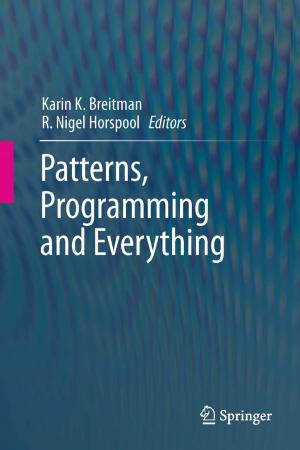Robust and Optimal Control
A Two-port Framework Approach
Nonfiction, Science & Nature, Technology, Automation, Electronics, Circuits| Author: | Da-Wei Gu, Mi-Ching Tsai | ISBN: | 9781447162575 |
| Publisher: | Springer London | Publication: | January 7, 2014 |
| Imprint: | Springer | Language: | English |
| Author: | Da-Wei Gu, Mi-Ching Tsai |
| ISBN: | 9781447162575 |
| Publisher: | Springer London |
| Publication: | January 7, 2014 |
| Imprint: | Springer |
| Language: | English |
A Two-port Framework for Robust and Optimal Control introduces an alternative approach to robust and optimal controller synthesis procedures for linear, time-invariant systems, based on the two-port system widespread in electrical engineering. The novel use of the two-port system in this context allows straightforward engineering-oriented solution-finding procedures to be developed, requiring no mathematics beyond linear algebra. A chain-scattering description provides a unified framework for constructing the stabilizing controller set and for synthesizing H2 optimal and H∞ sub-optimal controllers. Simple yet illustrative examples explain each step.
A Two-port Framework for Robust and Optimal Control features:
· a hands-on, tutorial-style presentation giving the reader the opportunity to repeat the designs presented and easily to modify them for their own programs;
· an abundance of examples illustrating the most important steps in robust and optimal design; and
· end-of-chapter exercises.
To further demonstrate the proposed approaches, in the last chapter an application case study is presented which demonstrates the use of the framework in a real-world control system design and helps the reader quickly move on with their own challenges. MATLAB® codes used in examples throughout the book and solutions to selected exercise questions are available for download.
The text will have particular resonance for researchers in control with an electrical engineering background, who wish to avoid spending excessive time in learning complex mathematical, theoretical developments but need to know how to deal with robust and optimal control synthesis problems.
Please see [http://km.emotors.ncku.edu.tw/class/hw1.html] for solutions to the exercises provided in this book.
A Two-port Framework for Robust and Optimal Control introduces an alternative approach to robust and optimal controller synthesis procedures for linear, time-invariant systems, based on the two-port system widespread in electrical engineering. The novel use of the two-port system in this context allows straightforward engineering-oriented solution-finding procedures to be developed, requiring no mathematics beyond linear algebra. A chain-scattering description provides a unified framework for constructing the stabilizing controller set and for synthesizing H2 optimal and H∞ sub-optimal controllers. Simple yet illustrative examples explain each step.
A Two-port Framework for Robust and Optimal Control features:
· a hands-on, tutorial-style presentation giving the reader the opportunity to repeat the designs presented and easily to modify them for their own programs;
· an abundance of examples illustrating the most important steps in robust and optimal design; and
· end-of-chapter exercises.
To further demonstrate the proposed approaches, in the last chapter an application case study is presented which demonstrates the use of the framework in a real-world control system design and helps the reader quickly move on with their own challenges. MATLAB® codes used in examples throughout the book and solutions to selected exercise questions are available for download.
The text will have particular resonance for researchers in control with an electrical engineering background, who wish to avoid spending excessive time in learning complex mathematical, theoretical developments but need to know how to deal with robust and optimal control synthesis problems.
Please see [http://km.emotors.ncku.edu.tw/class/hw1.html] for solutions to the exercises provided in this book.















